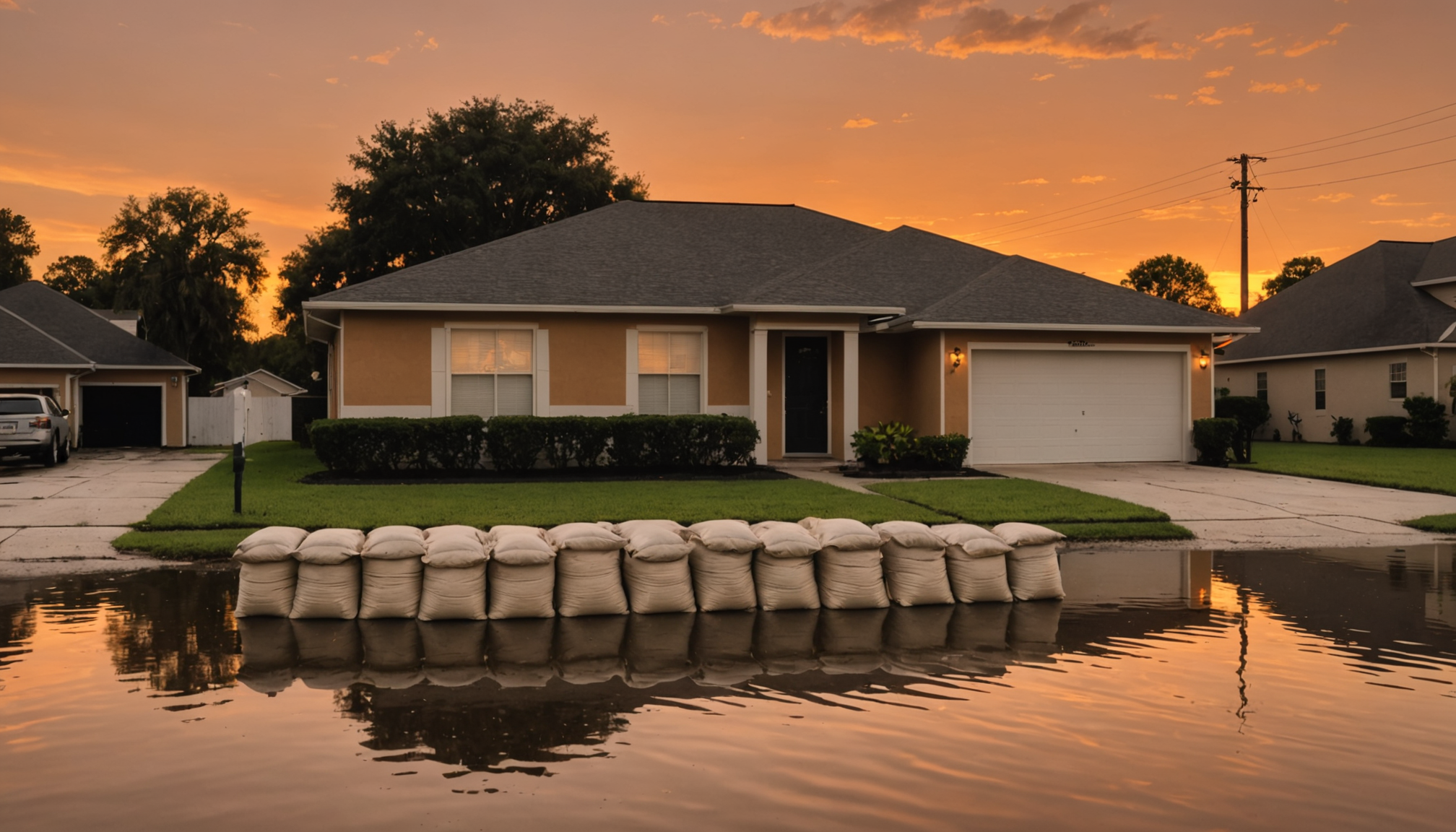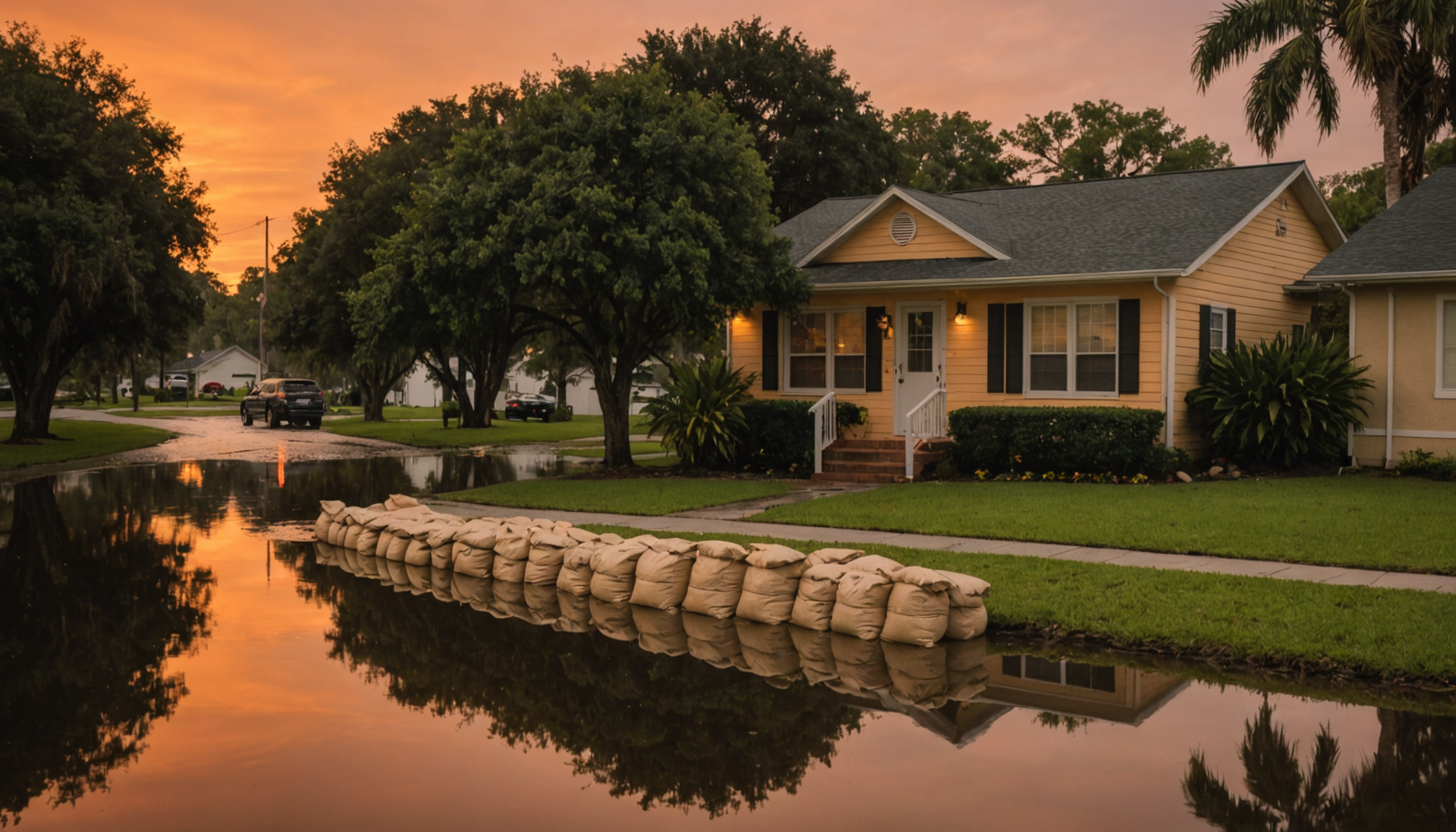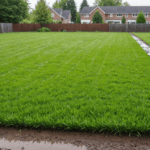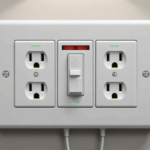Tampa’s vulnerability to flooding stems from its unique geographical location and climate patterns. According to the National Weather Service, the Tampa Bay area receives an average of 46 inches of rainfall annually, with approximately 60% occurring during the summer months. The city’s low elevation, combined with its proximity to the Gulf of Mexico and numerous waterways, creates significant flood risks for residential areas.
FEMA flood maps indicate that over 40% of Tampa’s residential properties lie within designated flood zones, particularly in areas near Hillsborough River and Old Tampa Bay. The Tampa Bay Regional Planning Council reports that storm surge flooding could affect up to 200,000 residents during a Category 3 hurricane, highlighting the critical nature of flood awareness and preparation.
Recent climate data from the National Oceanic and Atmospheric Administration (NOAA) shows a 300% increase in high-tide flooding events in Tampa over the past two decades. Urban development has exacerbated these risks by reducing natural drainage pathways and increasing impervious surfaces. The City of Tampa’s Stormwater Department documented over 1,200 flooding incidents in residential areas during 2022 alone.
- Primary flood risk factors include:
- Tropical storms and hurricanes (June through November)
- Heavy summer thunderstorms
- King tides and storm surge
- Urban development and inadequate drainage infrastructure
Local elevation plays a crucial role in determining flood risk. Properties in South Tampa, Davis Islands, and Shore Acres face particular challenges due to their low-lying terrain. The Tampa Bay Climate Science Advisory Panel projects sea-level rise could increase flooding frequency by 20% by 2050, making proper home protection measures increasingly important.
According to Tampa’s Office of Emergency Management, even properties outside designated flood zones should prepare for potential water intrusion. Historical data shows that 25% of flood insurance claims in Tampa come from properties in low to moderate-risk areas, emphasizing the importance of understanding local drainage patterns and implementing preventive measures regardless of location.
Sandbag placement and preparation
Proper sandbag deployment serves as a critical defense against flooding in Tampa homes. The most effective barrier requires careful preparation and strategic placement. Begin by selecting heavy-duty polypropylene sandbags rated for flood control – these typically measure 14 by 26 inches when empty. Local emergency management offices recommend filling bags only about 60% full, which allows for proper stacking and maximum effectiveness.
For optimal protection, create a pyramid-shaped barrier with a base width three times the height. Place the first layer of sandbags tightly together, with folded tops facing upstream and overlapping like roof shingles. Each subsequent layer should be set back halfway over the previous row, ensuring bags are staggered at the joints like bricks. This technique significantly enhances the barrier’s stability and water-resistance capabilities.
When protecting doorways, extend the sandbag wall at least 2 feet beyond the opening on each side. For garage entrances, which are particularly vulnerable during Tampa’s intense summer storms, consider creating a U-shaped barrier that prevents water from seeping around the edges. Professional emergency responders suggest using plastic sheeting between the sandbags and the building to provide an additional water barrier.
Fill materials matter significantly – while sand is ideal, local suppliers may offer alternatives during emergencies. The City of Tampa often provides pre-filled sandbags during severe weather events, but maintaining a personal supply ensures immediate access when needed. One square foot of protection typically requires about 30 sandbags when properly stacked.
- Position sandbags with the folded top facing the water’s direction for maximum effectiveness
- Maintain a supply of at least 100 sandbags for an average-sized home entrance
- Replace sandbags annually or after exposure to floodwater to ensure integrity
- Store unused sandbags in a dry, covered area to prevent deterioration
Gutter maintenance and upgrades
A surprising number of Tampa homeowners overlook their gutters until flooding becomes an issue. One of the most common mistakes is failing to clean gutters regularly, especially before the intense summer storm season. Leaves, pine needles, and debris should be removed at least twice yearly, with additional checks after major storms. Neglecting this maintenance can lead to overflowing gutters that dump water directly against the house foundation.
Another frequent error is installing gutters of insufficient size. Many homes still use 5-inch gutters when Tampa’s heavy rainfall patterns actually require 6-inch systems for effective water management. Downspouts are often incorrectly spaced, with many homes having too few outlets to handle the water volume during intense storms. Experts recommend installing downspouts every 20 to 30 feet of gutter length for optimal drainage.
Improper gutter slope represents another critical issue. Professional installers follow the rule of a quarter-inch slope for every 10 feet of gutter length, but DIY installations often miss this crucial detail. Without proper slope, water pools in the gutters, leading to overflow and potential foundation damage. Using incorrect bracket spacing is another common mistake – brackets should be placed every 24 inches in Tampa’s climate to prevent sagging under heavy rainfall.
Many homeowners also make the error of directing downspouts too close to the foundation. Experts recommend extending downspouts at least 6 feet away from the house, yet many terminate within a foot or two of the walls. This oversight can saturate the soil around foundations, leading to basement or crawl space flooding. Simple downspout extensions or underground drainage systems can easily correct this issue.
Additional common mistakes include:
– Using incompatible materials (mixing aluminum and copper leads to corrosion)
– Failing to install gutter guards in areas with heavy tree coverage
– Neglecting to seal gutter seams and corners properly
– Installing gutters behind the drip edge instead of beneath it
– Choosing inappropriate gutter styles for local rainfall intensity
Effective yard drainage solutions
Creating effective yard drainage solutions begins with a comprehensive assessment of your property’s natural water flow patterns. In Tampa’s flood-prone environment, proper grading plays a vital role – experts recommend a minimum slope of 6 inches for every 10 feet away from your home’s foundation. This gradual decline helps direct water away from structures naturally, reducing the risk of flooding during intense storms.
French drains have proven particularly effective in Tampa’s sandy soil conditions. These underground systems, consisting of perforated pipes surrounded by gravel, can redirect thousands of gallons of water away from problem areas. Install them at least 6 inches deep, using 4-inch diameter pipes for residential applications, and ensure they slope at least 1 inch per 8 feet for optimal drainage.
Surface water management requires strategic planning. Consider installing catch basins at low points in your yard, connecting them to underground drainage pipes that direct water to appropriate discharge points. These systems should be sized according to your property’s specific needs – a typical residential lot in Tampa might require several 12-inch square basins to handle heavy rainfall effectively.
Permeable hardscaping materials offer another layer of protection. Replace solid concrete paths with permeable pavers or gravel walkways, which can absorb up to 3 inches of rainfall per hour. Rain gardens, strategically placed in natural depressions, can manage runoff while adding aesthetic value to your landscape. These gardens should be planted with native species that tolerate both wet and dry conditions.
Key implementation strategies include:
– Installing channel drains near garage entrances and patios
– Creating swales along property boundaries to direct water flow
– Using river rock in drainage paths to prevent soil erosion
– Maintaining at least 6 inches of clearance between mulch and siding
– Installing pop-up emitters at drainage discharge points
Professional landscapers recommend conducting quarterly maintenance checks on all drainage systems, especially before Tampa’s rainy season. Clear debris from catch basins, check pipe connections, and ensure water flows freely through all drainage channels. With proper installation and regular maintenance, these solutions can protect your property from even the most challenging weather conditions.
Remember that each property’s drainage needs are unique, and solutions should be tailored accordingly. Working with local drainage experts can help identify the most effective combination of methods for your specific situation. By taking proactive steps now, you’ll be better prepared to handle whatever weather challenges come your way.
Emergency preparedness tips
- How soon before a storm should I start preparing my home in Tampa?
- Preparation should begin at least 72 hours before a predicted storm event. This allows adequate time to gather supplies, place sandbags, clear gutters, and secure outdoor items that could become hazards during flooding.
- What essential items should I include in my Tampa flood emergency kit?
- Your emergency kit should contain enough supplies for at least 7 days, including non-perishable food, water (1 gallon per person per day), medications, flashlights, batteries, and important documents in waterproof containers. Include battery-powered weather radios and portable phone chargers for staying informed during power outages.
- How can I protect important documents during flooding?
- Store vital documents in waterproof containers or sealed plastic bags placed in an elevated location. Consider keeping digital copies in cloud storage and original documents in a waterproof safe or safety deposit box away from flood-prone areas.
- When should I consider evacuating my Tampa home due to flood risks?
- Evacuate immediately when local authorities issue mandatory evacuation orders or if your home is in a flood-prone area during severe weather warnings. Don’t wait until flooding begins, as roads may become impassable and rescue services overwhelmed.
- What’s the best way to monitor potential flooding in my neighborhood?
- Use multiple sources including the NOAA weather radio, local news stations, and the City of Tampa’s emergency alert system. Download emergency alert apps and follow local emergency management social media accounts for real-time updates about drainage issues and flooding conditions.











